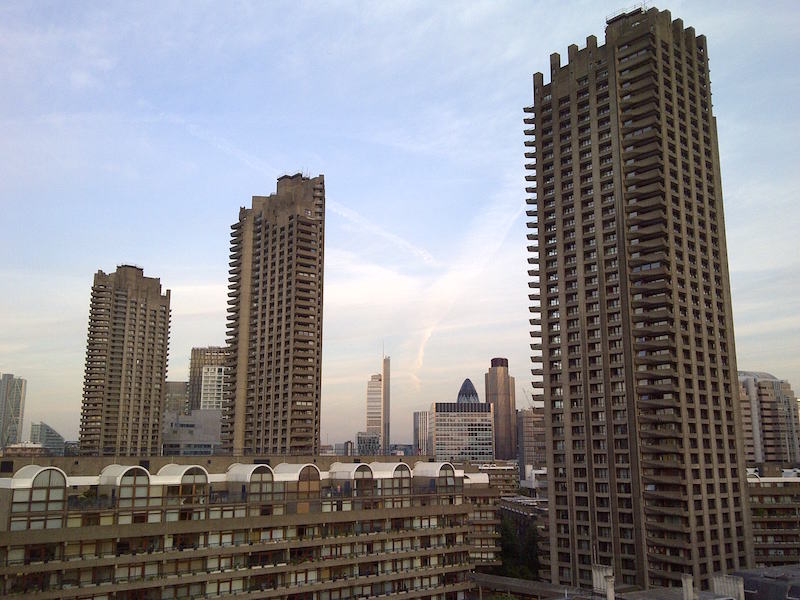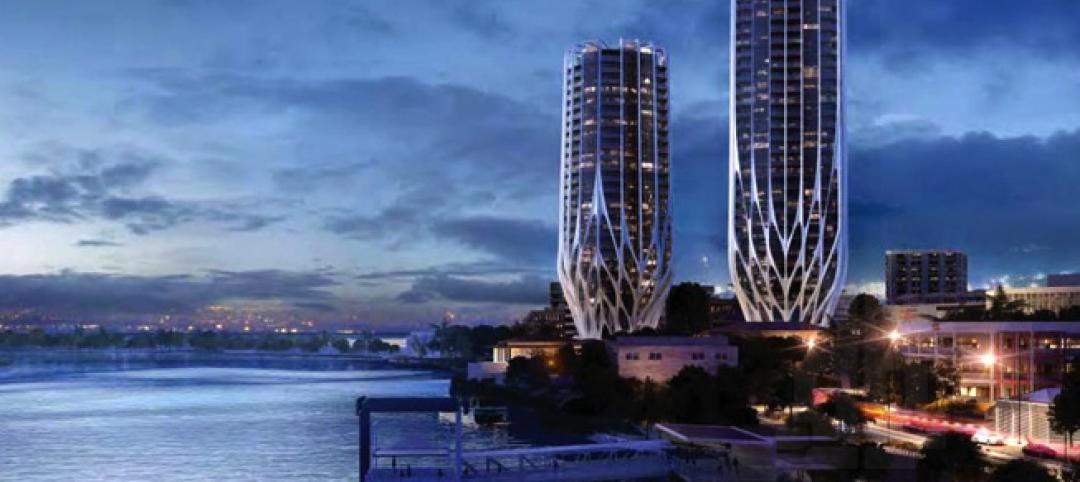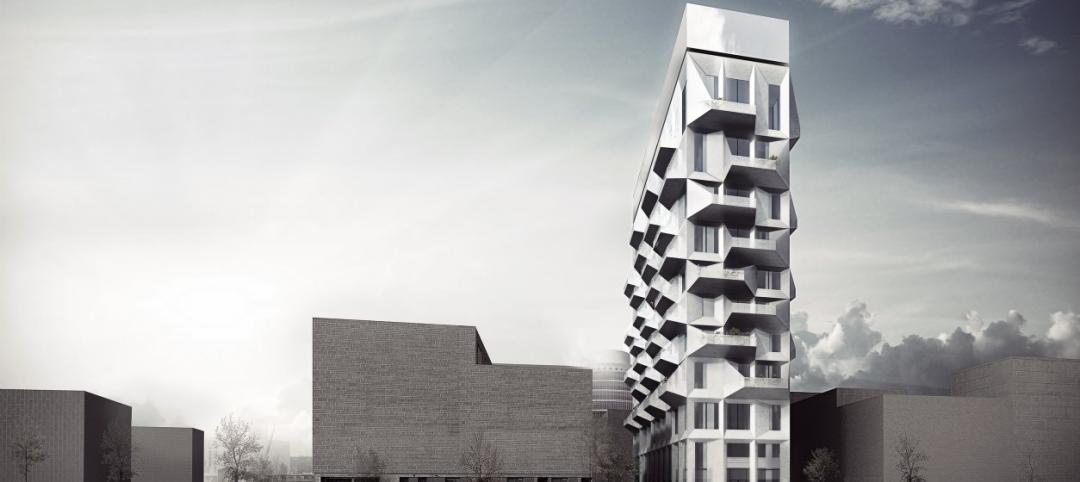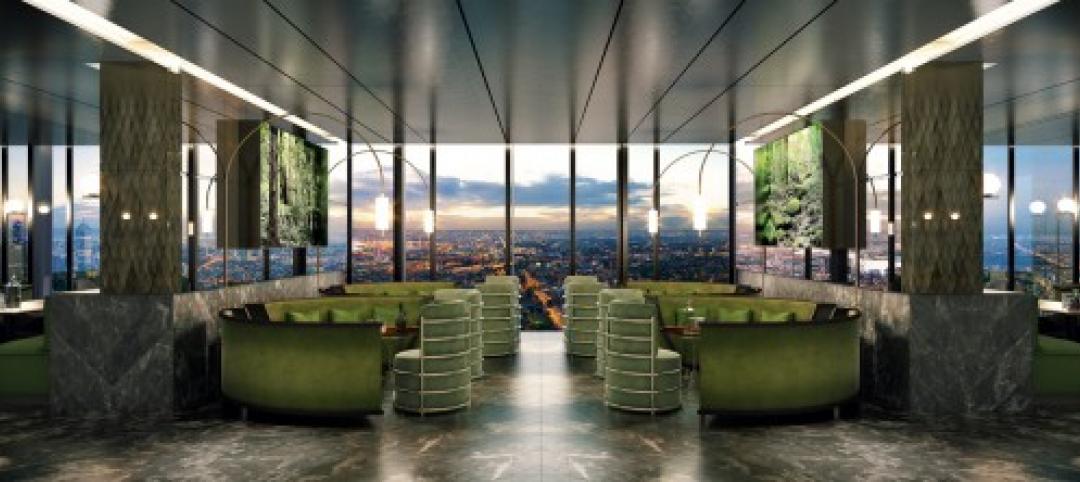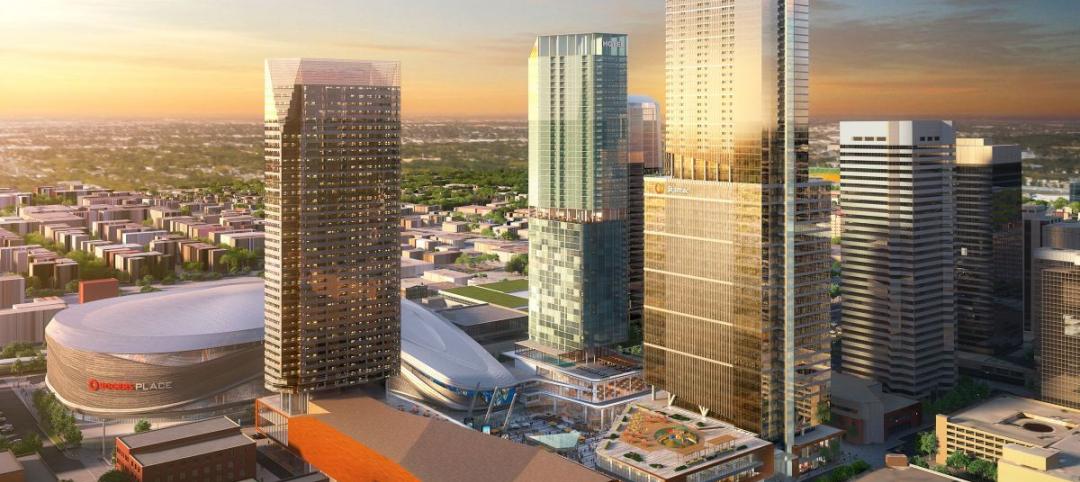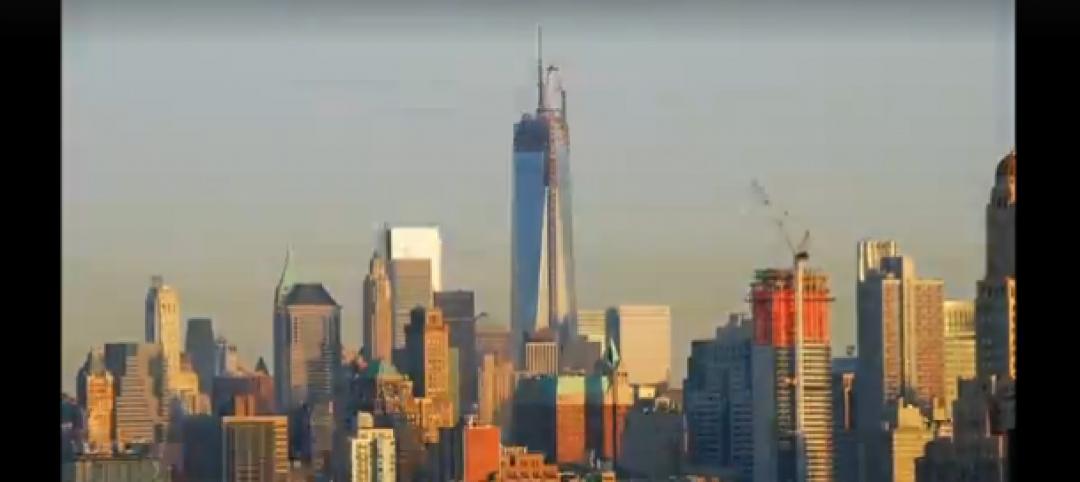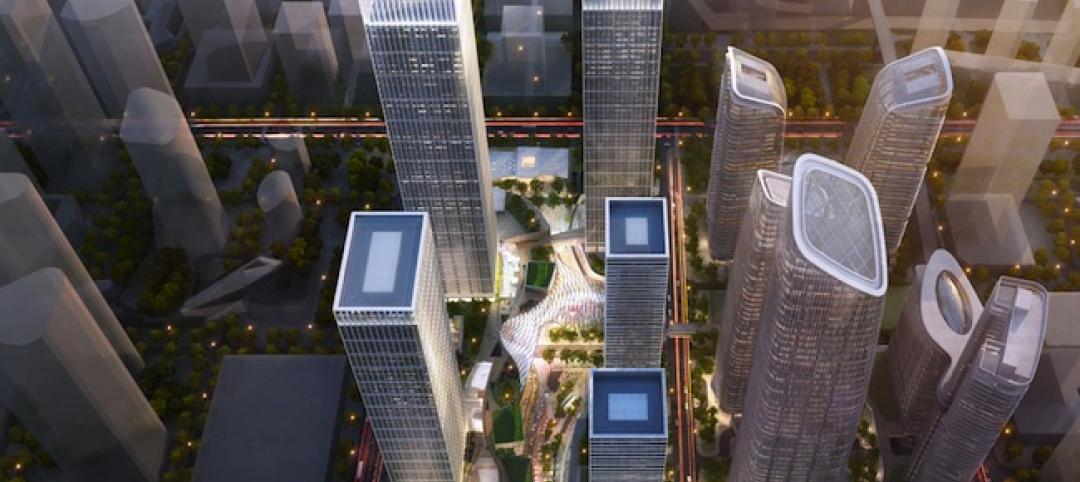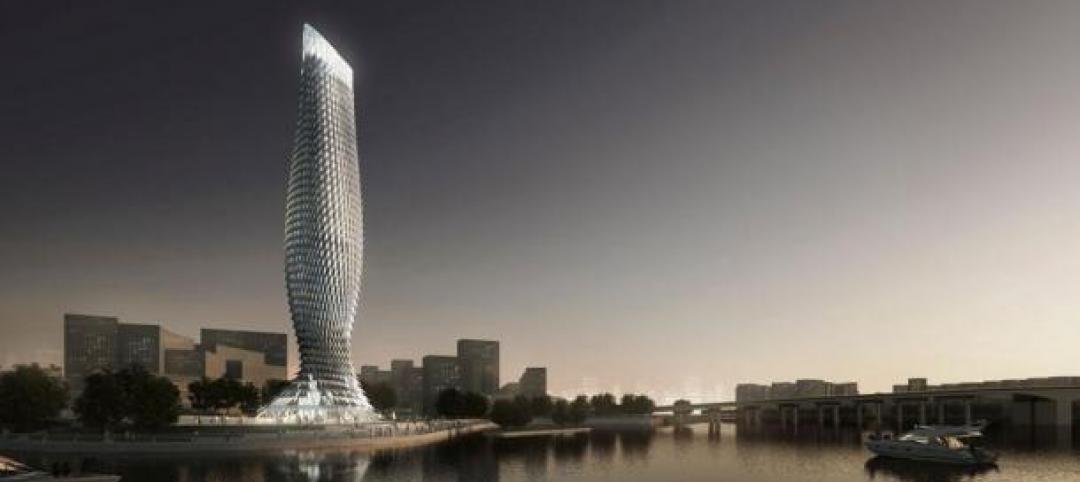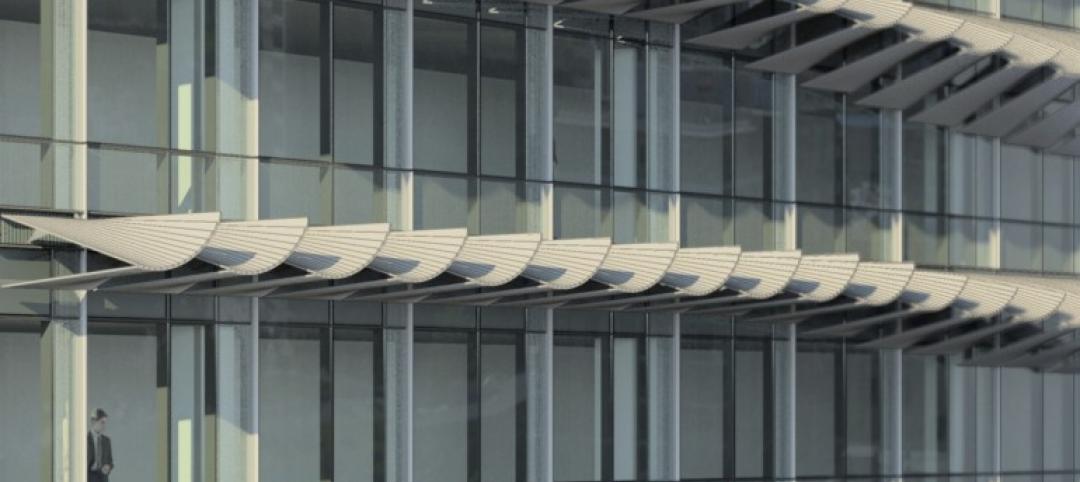Architects typically are a bit underrepresented when it comes to movies, television, and literature. Sure, there’s Mike Brady and Ted Mosby on the TV side of things, Doug Roberts from The Towering Inferno on the silver screen, and Howard Roark from Ayn Rand’s novel The Fountainhead. But the humble architect is nowhere near the heights set by police officers, businessmen, or politicians for being represented in fiction. But, as Tech Insider reports, "High-Rise," a new movie based on the book of the same name, is about to add to the list of stories about fictional architects.
It should be noted, however, that the architect in "High-Rise" takes on the role of the villain. The story centers on a young doctor who moves into a brand new high rise that contains everything a person would ever need. There are swimming pools, a school, and a supermarket all located within the large, brutalist structure. Additionally, the building divides its occupants into lower, middle, and upper class in literal terms, as the lowest floors are meant for the lower class and the top floors are reserved for the upper class.
It doesn’t take long for the fancy parties and opulent lifestyle enjoyed by the top floors, but not the bottom, to breed violence and fighting among all floors. Elevators and swimming pools are fought over and floors begin attacking each other for control of the building.
Meanwhile, our evil architect, Anthony Royal, sits in his top-level penthouse and watches with delight as the building and all of its tenants descend into madness.
So, yeah, it’s a pretty dark story, but it also offers some timely social commentary about the state of modern architecture. The Guardian’s Oliver Wainwright writes that the quote featured on the cover of the novel that reads “A hideous warning” suggests that Ballard’s intention with the story “was a damning critique of the inhumane direction modern architecture had taken.”
While the story is about much more than that, issues steeped in architecture and city planning are still definitely explored. For example, the lower class residents in the story at the bottom floors of the building strike up memories of “poor doors” (separate entrances for low-income tenants), which were just recently banned in New York City. Additionally, as luxury skyscrapers grow taller and taller, they sometimes end up blocking the sun at street level, prompting worries that sunshine could become a rare commodity in the urban landscape of the future for anyone not equipped to afford the high cost of living associated with these luxury buildings.
This London-based film arrives at a felicitous time for London, specifically. The city has plans for over 400 tall buildings to be constructed over the next few years. Many local residents are worried the addition of so many tall skyscrapers will prove to be a blight on the London skyline and ruin the aesthetic of the historic city.
Another somewhat frightening parallel that can be drawn between the story of this film/novel and reality comes in the form of the Sky Mile Tower, which Kohn Pedersen Fox recently revealed research for (although, no construction plans currently exist). This mile-tall building was designed with a similarly self-contained nature reminiscent of the fictional "High-Rise" building, such as including restaurants, hotels, gyms, libraries, and clinics, all within the structure. While the Sky Mile Tower is still a work of fiction itself, it is a little unsettling to see the similarities.
"High-Rise" comes to theaters on May 13th in the U.S. View the trailer here.
Related Stories
| Sep 5, 2014
First Look: Zaha Hadid's Grace on Coronation towers in Australia
Zaha Hadid's latest project in Australia is a complex of three, tapered residential high-rises that have expansive grounds to provide the surrounding community unobstructed views and access to the town's waterfront.
| Sep 2, 2014
Extreme conversion: 17-story industrial silo to be converted to high-rise housing
As part of Copenhagen's effort to turn an industrial seaport into a bustling neighborhood, Danish architecture firm COBE was invited to convert a grain silo into a residential tower.
| Sep 2, 2014
Melbourne's tallest residential tower will have 'optically transformative façade'
Plans for Melbourne's tallest residential tower have been released by Elenberg Fraser Architects. Using an optically transformative façade and botanical aesthetic, the project seeks to change the landscape of Australia's Victoria state.
| Aug 28, 2014
Stantec releases design for Edmonton's tallest tower
At 227 meters, Stantec Tower will be the tallest building in the city, dwarfing the two next-tallest: Epcor Tower and Manulife Tower.
| Aug 25, 2014
Tall wood buildings: Surveying the early innovators
Timber has been largely abandoned as a structural solution in taller buildings during the last century, in favor of concrete and steel. Perkins+Will's Rebecca Holt writes about the firm's work in surveying the burgeoning tall wood buildings sector.
| Aug 25, 2014
'Vanity space' makes up large percentage of world's tallest buildings [infographic]
Large portions of some skyscrapers are useless space used to artificially enhance their height, according to the Council on Tall Buildings and Urban Habitat.
| Aug 25, 2014
Photographer creates time-lapse video of 1 WTC using 30,000 photos
Choosing from 30,000 photos he took from the day construction began in 2006 to the day when construction was finished in 2012, Brooklyn-based photographer Benjamin Rosamund compressed 1,100 photos to create the two-minute video.
| Aug 19, 2014
Goettsch Partners unveils design for mega mixed-use development in Shenzhen [slideshow]
The overall design concept is of a complex of textured buildings that would differentiate from the surrounding blue-glass buildings of Shenzhen.
| Aug 15, 2014
First look: RMJM’s 'jumping fish' tower design for the Chinese Riviera
The tower's fish-jumping gesture is meant to symbolize the prosperity and rapid transformation of Zhuhai, China.
| Aug 12, 2014
Shading prototype could allow new levels of environmental control for skyscraper occupants
Developed by architects at NBBJ, Sunbreak uses a unique three-hinged shade that morphs from an opaque shutter to an abstract set of vertical blinds to an awning, depending on what is needed.


